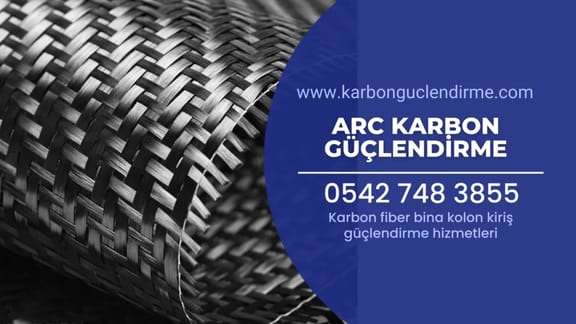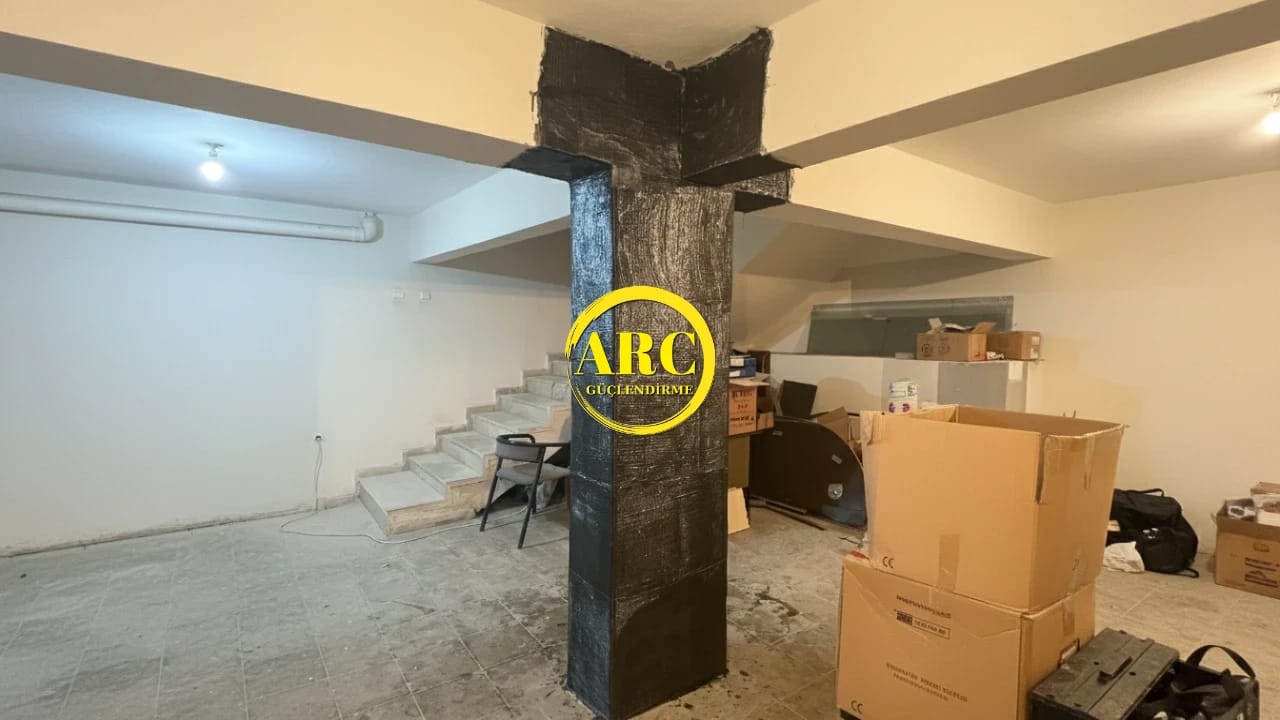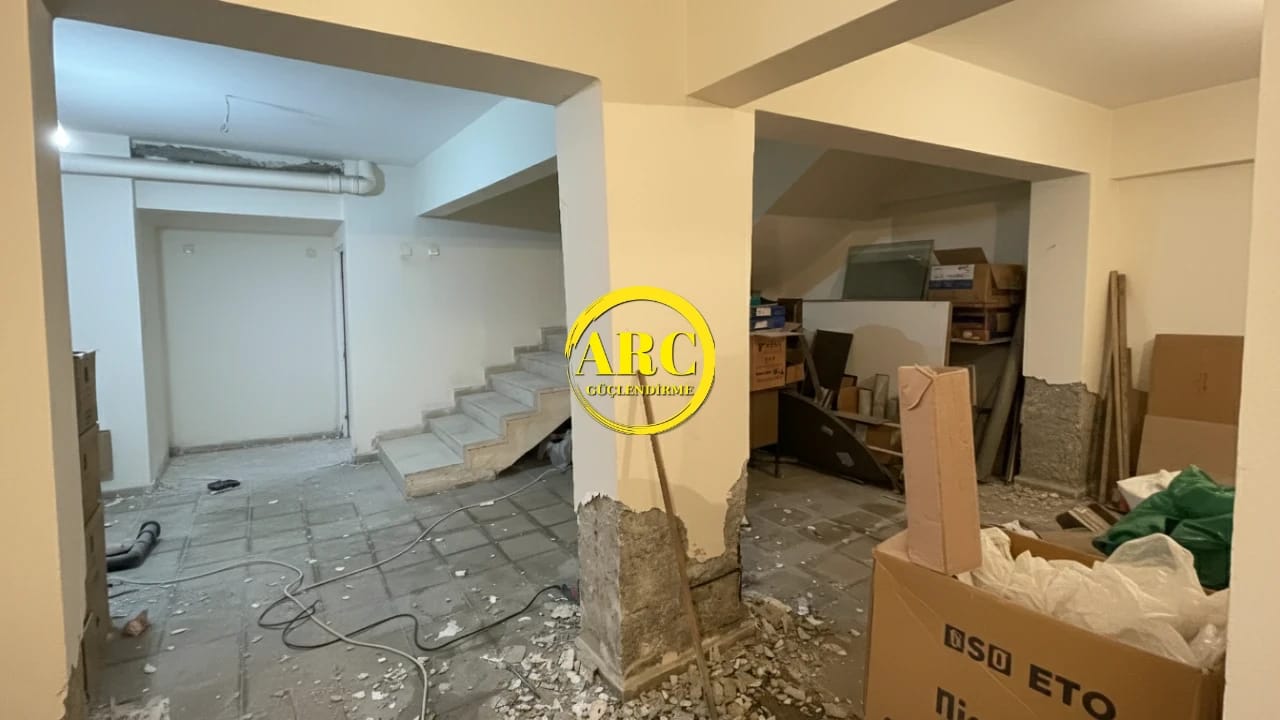Yapısal Güçlendirmede Devrim: Karbon Fiber (CFRP) Çözümleri
Binalarınızı karbon fiber ile güçlendirin. Depreme dayanıklı, uzun ömürlü ve güvenli yapılar için uzman CFRP ve FRP plaka uygulama hizmetleri sunuyoruz.
Güçlendirme Öncesi ve Sonrası
Karbon fiber uygulamalarımızın yapılarda yarattığı gözle görülür farkı ve yapısal dönüşümü inceleyin.
Çözüm Ortaklarımız
Güvenilir Malzeme Tedarikçileri ve Çözüm Ortaklarımız
Projelerimizde yalnızca uluslararası standartlara uygun, sertifikalı ve kalitesi kanıtlanmış karbon fiber (CFRP), elyaf (FRP) ve epoksi markaları kullanıyoruz.
Profesyonel Karbon Fiber Güçlendirme Sürecimiz
Projenizi başından sonuna kadar titizlikle yönetiyor, 6 adımda güvenli ve kalıcı çözümler sunuyoruz.
Keşif ve Yapısal Analiz
Yapınızın mevcut durumunu yerinde inceliyor, statik analizler ile güçlendirme ihtiyacını belirliyoruz.
Projelendirme ve Tasarım
Analiz sonuçlarına göre en uygun karbon fiber (CFRP/FRP) güçlendirme yöntemini seçiyor ve uygulama projesini hazırlıyoruz.
Yüzey Hazırlığı
Uygulama yapılacak betonarme yüzeyleri (kolon, kiriş, zemin) pürüzsüzleştiriyor, temizliyor ve onarıyoruz.
Epoksi Astar Uygulaması
Karbon fiberin betona mükemmel yapışmasını sağlamak için özel epoksi astarları yüzeye uyguluyoruz.
Karbon Fiber (CFRP) Uygulaması
Projesine uygun olarak karbon fiber plaka veya elyaf kumaşları, epoksi reçine ile yüzeye lamine ediyoruz.
Son Kontrol ve Teslim
Uygulamanın kalitesini kontrol ediyor, projenin tamamlandığını raporlayarak size güvenle teslim ediyoruz.
0+
Tamamlanan Güçlendirme Projesi
0
Yıllık Sektör Tecrübesi
0%
Müşteri Memnuniyeti Oranı
0m²+
Güçlendirilen Toplam Alan
Tamamlanan Karbon Fiber Güçlendirme Projelerimiz
Kolon, kiriş, zemin ve duvar güçlendirme uygulamalarımızdan görsellerle uzmanlığımızı keşfedin.
Karbon Fiber Güçlendirme Hizmetlerimiz
Yapılarınızın taşıma kapasitesini ve dayanıklılığını artırmak için sunduğumuz profesyonel CFRP ve FRP güçlendirme çözümleri.
Kolon Güçlendirme
Karbon fiber elyaf (FRP) sargılama ile kolonların eksenel yük kapasitesini ve sünekliğini artırarak deprem performansını iyileştiriyoruz.
Kiriş Güçlendirme
Eğilme ve kesme kapasitesi yetersiz kirişleri, karbon fiber plaka (CFRP) ve kumaşlarla güçlendirerek sehimleri kontrol altına alıyoruz.
Döşeme ve Zemin Güçlendirme
Artan yüklere veya tasarım hatalarına karşı döşemelerin taşıma kapasitesini karbon fiber laminat ve plakalarla etkili bir şekilde artırıyoruz.
Duvar Güçlendirme
Yığma ve betonarme duvarların deprem ve yanal yüklere karşı dayanımını, CFRP şeritler uygulayarak güçlendiriyoruz.
Yapısal Hasar Onarımı
Korozyon, deprem veya çevresel etkenlerle hasar görmüş betonarme elemanları, epoksi enjeksiyonu ve karbon fiber takviyesi ile onarıyoruz.
Proje ve Danışmanlık
Güçlendirme projeleriniz için statik analiz, tasarım, malzeme seçimi ve uygulama denetimi konularında uzman mühendislik danışmanlığı sunuyoruz.
Karbon Fiber Güçlendirme Uzmanı: Yapılarınız Bizimle Güvende
Modern mühendislik ve yenilikçi karbon fiber teknolojilerini birleştirerek binalarınızın ömrünü uzatıyoruz.
Sektördeki tecrübemizle, deprem riski taşıyan veya zamanla yıpranmış her türlü yapıyı (bina, köprü, viyadük) karbon fiber (CFRP) ve cam elyaf (GFRP) kompozit malzemelerle güçlendiriyoruz. Amacımız, yapısal güvenliği en üst seviyeye çıkararak can ve mal güvenliğinizi sağlamaktır.
Mühendislik ekibimiz, her projeye özel çözümler üreterek, yönetmeliklere uygun, ekonomik ve hızlı uygulanabilir güçlendirme tasarımları sunar. Kaliteden ödün vermeden, en son teknolojiyi kullanarak yapılarınızı geleceğe hazırlıyoruz.

Yüksek Mukavemet ve Hafiflik
Çeliğe göre çok daha hafif ve dayanıklı olan karbon fiber, yapıya ek yük getirmeden maksimum güçlendirme sağlar.
Hızlı ve Pratik Uygulama
Geleneksel yöntemlere kıyasla daha az işçilik gerektirir ve yapı kullanımını aksatmadan kısa sürede tamamlanır.
Korozyon Direnci ve Uzun Ömür
Paslanmaz yapısı sayesinde bakım gerektirmez ve uygulandığı yapı elemanının ömrünü önemli ölçüde uzatır.
Neden Karbon Fiber Güçlendirmede Bizi Tercih Etmelisiniz?
Uzmanlık, kalite ve güveni bir araya getirerek projelerinize değer katıyoruz.
Mühendislik Odaklı Yaklaşım
Her projeyi statik analiz ve detaylı hesaplamalarla ele alıyor, en doğru ve güvenli çözümü sunuyoruz.
Sertifikalı Uzman Ekip
Uygulamalarımız, karbon fiber güçlendirme konusunda eğitimli ve sertifikalı profesyonel ekipler tarafından yapılır.
Kaliteli Malzeme Garantisi
Yalnızca uluslararası standartlara uygun, test edilmiş ve yüksek performanslı CFRP ve FRP ürünleri kullanıyoruz.
Zamanında Proje Teslimi
İş programına sadık kalarak projelerinizi anlaşılan sürede, eksiksiz ve sorunsuz bir şekilde teslim ediyoruz.
Müşterilerimiz Ne Diyor?
Tamamladığımız karbon fiber güçlendirme projeleri sonrası müşteri memnuniyeti ve yorumları.
"Deprem riskine karşı binamızın kolon ve kirişlerini karbon fiber ile güçlendirdiler. Süreç boyunca çok profesyonel ve bilgilendiriciydiler. Artık daha güvendeyiz."
Ahmet Yılmaz
İstanbul, Apartman Yöneticisi
"Fabrikamızdaki ağır yüklere maruz kalan döşemeler için harika bir çözüm sundular. Uygulama çok hızlı bitti ve üretimimiz aksamadı. Teşekkürler!"
Elif Kaya
İzmir, Endüstriyel Tesis Sahibi
"Tarihi bir yapının restorasyon projesinde çalıştık. Karbon fiberin esnekliği ve gücü sayesinde orijinal mimariye zarar vermeden güçlendirme yapabildik. Sonuç mükemmel."
Mehmet Öztürk
Ankara, İnşaat Mühendisi
İletişime Geçin
Karbon fiber güçlendirme ihtiyaçlarınız için bize ulaşın. Projelerinizi değerlendirelim ve size en uygun çözümleri sunalım.










